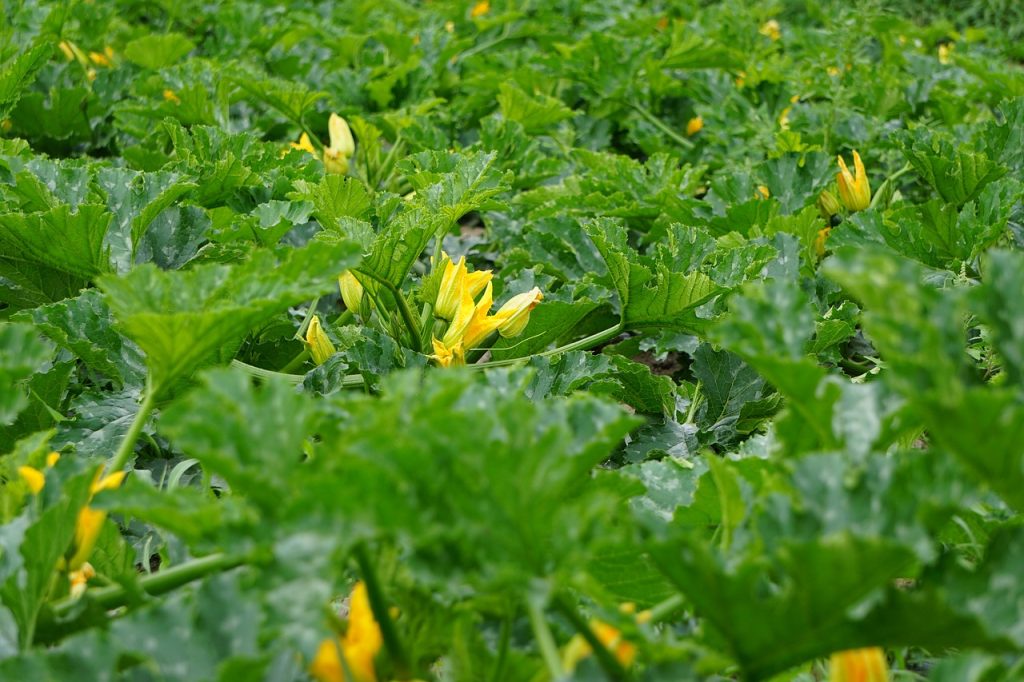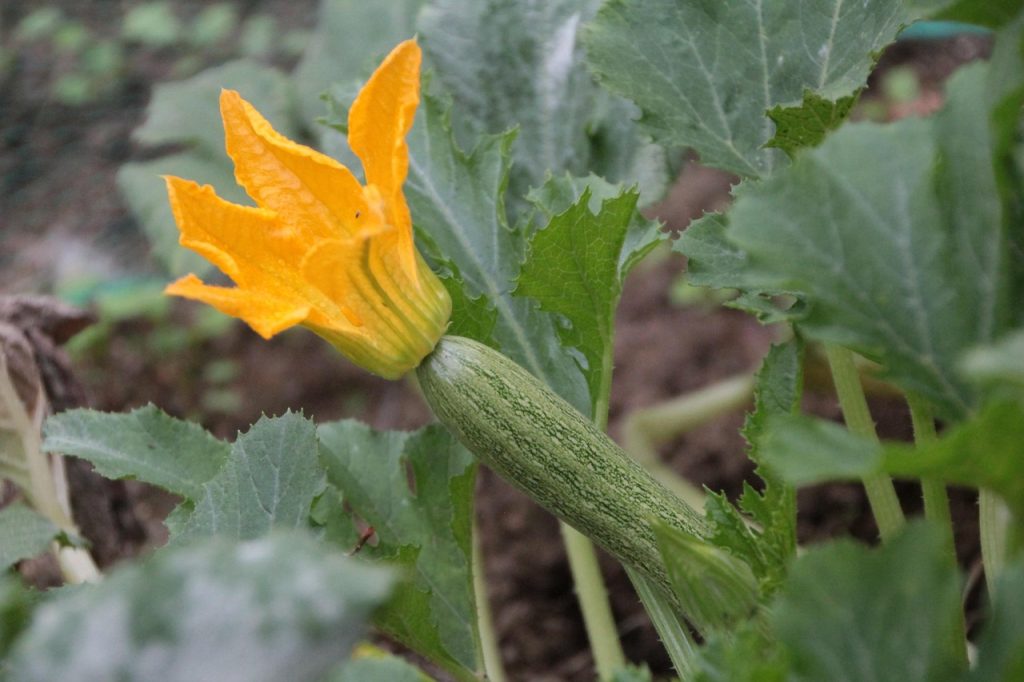Growing zucchini in your backyard can feel like hitting the jackpot in the vegetable garden. These prolific summer squashes are easy to cultivate, incredibly versatile in the kitchen, and packed with nutrients like vitamin C and fiber. Whether you’re a newbie gardener or someone with a few seasons under your belt, mastering zucchini plant care means you’ll have an endless supply for grilling, baking into breads, or even sneaking into smoothies. But to get those bumper crops, you need to focus on the basics: sunlight, soil, water, and a bit of vigilance against pests. In this guide, we’ll walk through everything you need to know about zucchini plant care, drawing on tried-and-true methods to help your plants thrive. By the end, you’ll be equipped to handle common challenges and enjoy fresh zucchini all summer long.

Choosing the Right Zucchini Variety for Your Garden
Before diving into the dirt, picking the best variety is key to successful zucchini plant care. Not all zucchinis are created equal—some are compact for small spaces, while others sprawl like vines. Classic green types like ‘Black Beauty’ or ‘Zephyr’ (with its yellow-striped fruits) are reliable choices for beginners. If you’re short on space, go for bush varieties such as ‘Bush Baby’ that don’t need staking. For something fun, try golden zucchinis like ‘Golden Glory’ for a pop of color in salads.
Consider your climate too. In warmer areas, heat-tolerant hybrids shine, while cooler regions might benefit from faster-maturing options. Most varieties take about 50-60 days from seed to harvest, so plan accordingly. Always check seed packets for specifics on disease resistance—many modern ones fend off powdery mildew better than heirlooms. Starting with the right type sets the foundation for low-maintenance care and high yields.
Preparing the Soil: The Foundation of Healthy Zucchini Plants
Zucchini plants are heavy feeders, so soil prep is non-negotiable in effective zucchini plant care. They crave well-drained, fertile soil rich in organic matter. Aim for a pH between 6.0 and 7.0—test your soil with a simple kit from the garden store if you’re unsure. Before planting, work in 2-3 inches of compost or well-rotted manure to boost nutrients and improve drainage. This not only feeds the roots but also helps retain moisture without waterlogging.
If your soil is heavy clay, add sand or perlite to lighten it up. For sandy soils, more compost will hold onto water better. Raised beds are a game-changer here, especially in areas with poor native soil—they warm up faster in spring and drain efficiently. Don’t forget to rotate crops; avoid planting zucchini where other squashes grew last year to prevent disease buildup. A little upfront effort in soil prep pays off with vigorous growth and fewer problems down the line.
Planting Zucchini: Timing and Techniques for Success
Timing is everything when it comes to planting in zucchini plant care. These warm-season lovers can’t handle frost, so wait until soil temperatures hit at least 65-70°F—usually late spring or early summer, around May in most temperate zones. Direct sowing seeds is straightforward: plant them 1 inch deep, 3-4 feet apart in rows spaced similarly. For hills, group 2-3 seeds in mounds 4 feet apart to encourage better pollination.
If you prefer transplants, start seeds indoors 3-4 weeks before the last frost, then harden them off before moving outside. Space plants generously—zucchini can spread up to 3 feet wide. In smaller gardens, train vining types up a trellis to save space and improve airflow. Companion planting helps too: pair with beans for nitrogen fixing or nasturtiums to deter pests. Once planted, mulch around the base with straw or wood chips to suppress weeds and keep roots cool.

Watering and Mulching: Keeping Your Zucchini Hydrated
Consistent watering is a cornerstone of zucchini plant care, as these plants guzzle moisture to produce those juicy fruits. Aim for about 1 inch of water per week, more during hot spells. Deep, infrequent soaks are better than shallow sprinkles—water at the base to avoid wetting leaves, which can invite fungal issues. Early morning is ideal, giving plants time to dry out before nightfall.
Mulching is your secret weapon here. A 2-3 inch layer of organic mulch like shredded leaves or grass clippings locks in soil moisture, regulates temperature, and cuts down on weeds. Just keep it away from stems to prevent rot. If you’re in a dry climate, consider drip irrigation for even watering without waste. Watch for signs of stress: wilting leaves mean it’s time to water, but yellowing could signal overwatering. Balance is key for plump, blemish-free zucchinis.
Fertilizing Zucchini Plants: Feeding for Abundant Growth
Zucchini are nutrient hogs, so regular feeding is essential in comprehensive zucchini plant care. Start with a balanced organic fertilizer at planting, then side-dress every 4-6 weeks with something high in phosphorus and potassium to support fruiting. Compost tea or worm castings work wonders for a natural boost.
Avoid excess nitrogen, which promotes leafy growth over fruits. In containers, use a slow-release granular fertilizer to prevent nutrient leaching. Test soil midway through the season if yields drop—adjust as needed. With proper feeding, one plant can yield up to 10 pounds of zucchini, so don’t skimp on this step.
Here’s a quick fertilizing schedule in table form:
| Growth Stage | Fertilizer Type | Frequency |
|---|---|---|
| At Planting | Balanced (10-10-10) | Once |
| Vegetative | Nitrogen-rich | Every 2 weeks |
| Fruiting | Phosphorus-potassium focus | Every 4 weeks |
| Maintenance | Compost or organic matter | As needed |
This approach ensures steady nutrition without overwhelming the plants.
Pruning and Supporting: Promoting Airflow and Structure
Pruning might not be the first thing you think of in zucchini plant care, but it’s crucial for healthy plants. As leaves grow dense, trim older or damaged ones to improve airflow and reduce mildew risk. Use clean shears, cutting at the base of stems when fruits start forming. This also makes harvesting easier and lets more sun reach developing zucchinis.
For vining varieties, staking or trellising is a must. Tie stems gently to supports like tomato cages or bamboo poles—think of it like training tomatoes. This keeps fruits off the ground, minimizing rot and pest access. Bush types usually stand alone, but in windy spots, a light stake helps. Regular pruning keeps plants tidy and productive longer into the season.

Managing Pests and Diseases in Zucchini Plants
No zucchini plant care guide is complete without tackling pests and diseases—they’re the bane of many gardeners. Common culprits include squash bugs, vine borers, and cucumber beetles. Scout regularly and hand-pick eggs or adults early on. Row covers protect young plants until flowering.
Powdery mildew shows as white dust on leaves—prevent it with good spacing and resistant varieties. If it hits, spray with a baking soda mix or neem oil. Bacterial wilt and blossom end rot often stem from uneven watering, so stay consistent. Rotate crops yearly and clean up debris in fall to break disease cycles. Natural predators like ladybugs help too. With proactive care, you can keep issues minimal and your harvest intact.
- Pest Prevention Tips:
- Introduce beneficial insects like bees for pollination and pest control.
- Use companion plants such as marigolds to repel aphids.
- Apply organic insecticides sparingly, only when needed.
- Monitor undersides of leaves weekly for early signs.
Pollination Tips: Ensuring Fruit Set in Your Zucchini
Poor pollination can leave you with flowers but no fruit, a common hiccup in zucchini plant care. Male flowers appear first, followed by females with tiny zucchinis at the base. Bees do most of the work, but if they’re scarce, hand-pollinate: use a soft brush to transfer pollen from males to females in the morning.
Plant pollinator-friendly flowers nearby, like borage or dill, to attract helpers. Avoid pesticides during bloom time. In hot weather, shade cloth can prevent flower drop. Good pollination means more zucchinis—aim for it to maximize your yield.
Harvesting and Storing: Reaping the Rewards
Harvest time is the payoff for all your zucchini plant care efforts. Pick when fruits are 6-8 inches long for the best tenderness—larger ones get seedy and tough. Use a sharp knife to cut, leaving a short stem. Check plants every 1-2 days in peak season; regular picking encourages more production.
Store fresh zucchini in the fridge’s crisper for up to a week. For longer, blanch and freeze slices, or shred for baking. Don’t wash until ready to use to avoid spoilage. With proper harvesting, you’ll avoid the “zucchini overload” jokes—though sharing extras with neighbors is half the fun.
Common Problems and Solutions in Zucchini Plant Care
Even with solid zucchini plant care, issues arise. Here’s a handy table of fixes:
| Problem | Symptoms | Solutions |
|---|---|---|
| No Fruit | Flowers drop | Improve pollination; check soil moisture. |
| Yellow Leaves | Wilting, spots | Adjust watering; test for nutrients. |
| Powdery Mildew | White powder on leaves | Prune for air; use fungicide spray. |
| Vine Borers | Sudden wilt | Cut out larvae; use row covers. |
| Blossom End Rot | Blackened ends | Consistent watering; add calcium. |
Addressing these promptly keeps your plants on track.
Wrapping Up: Mastering Zucchini Plant Care for Year-Round Success
There you have it—a complete roadmap to zucchini plant care that turns even modest gardens into productive havens. From soil prep to harvest, focusing on sunlight, water, and pest watchfulness ensures thriving plants. Remember, zucchini reward patience with abundance, so experiment with varieties and techniques to suit your space. Whether grilling fresh slices or baking loaves, the satisfaction of homegrown produce is unmatched. Get planting, and soon you’ll be the go-to expert among your gardening friends. Happy growing!